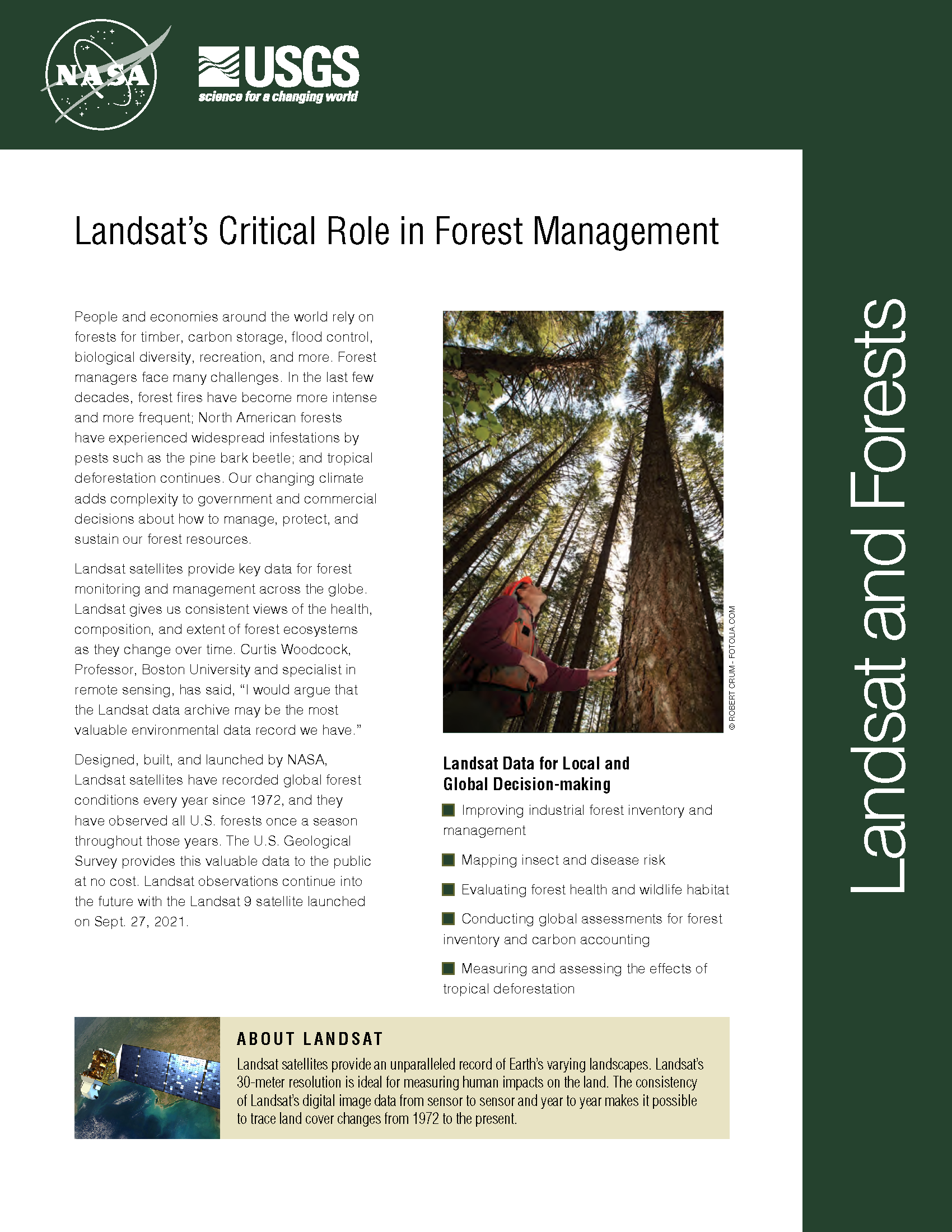Landsat’s Role in Managing Forests
People and economies around the world rely on forests for timber, carbon storage, flood control, biological diversity, recreation, and more. Forest managers face many challenges. In the last few years, forest fires have become more intense and more frequent; North American forests have experienced widespread infestations by pests such as the pine bark beetle; and tropical deforestation continues. Our changing climate adds complexity to government and commercial decisions about how to manage, protect, and sustain our forest resources. Landsat satellites provide key data for forest monitoring and management across the globe. Landsat gives us consistent views of the health, composition, and extent of forest ecosystems as they change over time. Curtis Woodcock, Professor, Boston University and specialist in remote sensing, has said, “I would argue that the Landsat data archive may be the most valuable environmental data record we have.” Designed, built, and launched by NASA, Landsat satellites have recorded global forest conditions every year since the 1970’s, and they have observed all U.S. forests once a season throughout those years. The U.S. Geological Survey provides this valuable data to the public at no cost. Landsat observations will continue into the future with Landsat 8.
Landsat 7 SLC-off Data Evaluated for Forest Change Detection
Researchers from the Canadian Forest Service’s Pacific Forestry Centre and the U.S. Geological Survey have published a study which evaluates the utility of histogram– and segment–based Landsat SLC-off gap-filled data products for
Diversity and Biomass of Tropical Forests Cleared for Land Development
• To learn more about the tropical forests that are cleared when urban and residential development spreads, scientists assembled the most comprehensive time series of land cover maps to date
New Landsat-Based Maps of Complex Caribbean Islands Reveal Conservation Opportunities Where Sugar Cane Cultivation Has Become Unprofitable
A new set of vegetation maps for five islands of the Caribbean Lesser Antilles, including Grenada, St. Kitts, Nevis, St. Eustatius and Barbados, appear in the June issue of the
Report Using Landsat and SPOT Data Shows Rapid Demise of Papua New Guinean Forests
Source: University of Papua New Guinea Remote Sensing Centre At the same time that the Government of Papua New Guinea is seeking compensation for conserving the carbon-trapping capacity of its
Landsat Used to Quantify Sumatran Deforestation and Elephant Peril
The World Wildlife Federation released a report this week warning that accelerated deforestation rates in Sumatra are increasing CO2emissions and pushing native elephants to the brink of extinction. A WWF
Landsat Helps Show That Forests Damaged by Hurricane Katrina Become Major Carbon Source
With the help of Landsat and MODIS data, a research team has estimated that Hurricane Katrina killed or severely damaged 320 million large trees in Gulf Coast forests, which weakened


